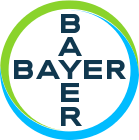What is the Barometer Global Survey?
The Barometer Leadership Coalition designed a global patient, provider, and clinic staff survey to investigate the challenges associated with clinical management of neovascular
age-related macular degeneration (nAMD), diabetic retinopathy (DR), and diabetic macular edema (DME) from these different perspectives. The survey also identified opportunities to overcome barriers to sub-optimal eye care and practical and meaningful interventions to help improve outcomes for patients.
We had overwhelming participation in the survey! We received more than 14,000 completed responses from 78 clinics* across 24 countries. Thank you to the patients, providers,
and clinic staff who contributed to the survey data.

We are honored and excited to announce that the results of the Barometer Global Survey in nAMD and DME were published in Ophthalmology and Therapy in December, 2024;
to read the publications, click on the titles below:
nAMD, DR, and DME Barometer Global Survey Results
Are you looking to present the results of the Barometer Global Survey results at an upcoming meeting or congress? The Barometer Program have created 2 slide decks providing an overview of the data from the primary analysis of the Barometer Global Survey in nAMD, DR, and DME.
Download the nAMD, DR, and DME Barometer Global Survey Results and share them with your peers:
nAMD and DME Barometer Global Survey Infographics
Are you looking to present the results of the Barometer Global Survey in an eye-catching and engaging way? These infographic series, developed by the Barometer Program, visualize the key themes and findings of the nAMD and DME Barometer Global Survey.
The infographic series covers 7 topics:
- Introduction to the survey, including demographics and characteristics of patients responding to the survey
- Patient perspectives on their disease and treatment
- Patient and provider perspectives on non–disease-related challenges including financial and communication challenges
- Patient and provider perspectives on disease and treatment comprehension
- Patient desire for extended treatment intervals
- Patient needs for support with treatment
- Five ways to improve care and treatment for patients
Download the nAMD and DME Barometer Global Survey Infographic Series and share them with your peers:
The data generated by the Barometer Global Survey have informed the development of evidence-driven materials; click the thumbnails below to download them:
Data from the overall cohort have previously been presented at EURETINA 2023; to read the abstracts, click on the titles below:
Country-specific manuscripts are being developed to help clinics identify and understand potential areas for improvement at a local level.
Survey data were analyzed by Exploristics, Inc. (UK), and publication assistance was provided by ApotheCom (UK).
*Australia: Australian Eye Specialists; Retina Specialists Victoria; Sydney West Retina. Brazil: CBV – Centro Brasileiro da Visão, CEROF – Centro de Referência em Oftalmologia; CRESEP – Hospital de Olhos de Araraquara; Hospital Oftalmologico de Sorocaba. Canada: Eye Care Center NB; Retina Center of Ottawa; Unity Health Toronto. China: Henan Provincial People’s Hospital; Shanghai General Hospital; The First Affiliated Hospital of Dalian Medical University; The First Affiliated Hospital of Kunming Medical University; Xi’an People’s Hospital; Zhongshan Ophthalmic Center of Sun Yat-sen University. Colombia: Cali Ophthalmology Clinic; Clínica Foscal; Clínica Oftalmológica del Caribe; Clínica Oftalmologica Unigarro; Fundacion Oftalmologica Nacional. Croatia: KBC Zagreb. Ethiopia: Biruh Vision Specialized Eye Care Center; La Vista Speciality Eye Clinic; Nisir Specialized Eye Clinic; Roha Specialized Eye Clinic. France: Centre PO2 (Pôle Oise Ophtalmologie); Centre Rétine Gallien; Hôpital de la Croix Rousse. Germany: Augenzentrum am St. Franziskus-Hospital; Klinikum der Universitaet Muenchen; Universitätsklinikum Bonn; Universitätsklinikum Tübingen. Ghana: Tamale Teaching Hospital. Greece: Ophthalmological Clinic of University Hospital of Alexandroupolis. India: Hyderabad Eye Research Foundation, L V Prasad Eye Institute; ICARE Eye Hospital; Narayana Nethralaya Eye Hospital; Prakash Netra Kendra; Sankara Nethralaya; Shroff Charity Eye Hospital; Synergy Eye Care (previously called Visitech Eye Institute). Indonesia: JEC Eye Hospitals & Clinics; Netra Klinik Spesialis Mata – Bandung; RS Khusus Mata Prov. Sumatera Selatan; Sumatera Eye Center. Israel: The Medical Research, Infrastructure, and Health Services Fund of the Tel-Aviv Sourasky Medical Center. Kenya: City Eye Hospital; Eldo Eye Clinic; Lighthouse for Christ Eye Centre. Kuwait: Kuwait Specialized Eye Center. Mexico: Asociación para Evitar la Ceguera en México; Dr. Roberto Nettel Flores General Hospital; Fundación Hospital Nuestra Señora de la Luz, IAP; Instituto Mexicano de Oftalmología IAP; Sala Uno Ophthalmological Center. Nigeria: Department of Ophthalmology University of Uyo Teaching Hospital, Uyo, Akwa-Ibom State; Department of Ophthalmology, Jos University Teaching Hospital, Jos; Eye Clinic, Department of Ophthalmology, Faculty of Clinical Sciences, College of Health Sciences, Ahmadu Bello University Zaria; Eye Foundation Hospital; MDR-Lighthouse Medical Eye and Specialist Laser Center Lokoja; University College Hospital, Ibadan. Portugal: ALM – Oftalmologia Médica e Cirúrgica; Centro Hospitalar de Setúbal; Centro Hospitalar Universitário de Coimbra; Centro Hospitalar do Porto. Russia: Federal State Budgetary Institution “National Medical and Surgical Center named after N.I. Pirogov” of the Ministry of Healthcare of the Russian Federation; Novosibirrsk State Region Clinic Hospital; The S. Fyodorov Eye Microsurgery Federal State Institution (Orenburg branch); Ufa Research Institute of Eye Diseases. Saudi Arabia: King Abd el Azez Medical City. Switzerland: Swiss Visio Montchoisi. Turkey: Ankara City Hospital; Gaziantep University; Hacettepe University; Karadeniz Technical University Faculty of Medicine; United Arab Emirates: Medcare Eye Center; Moorfields Hospital Abu Dhabi.





